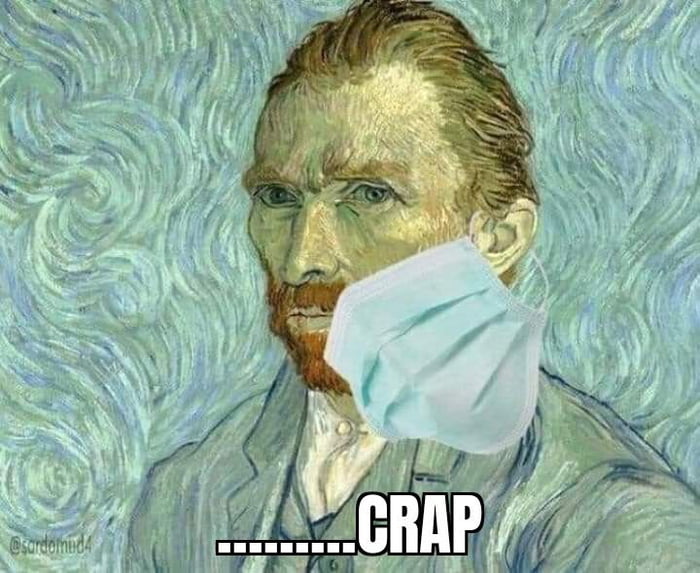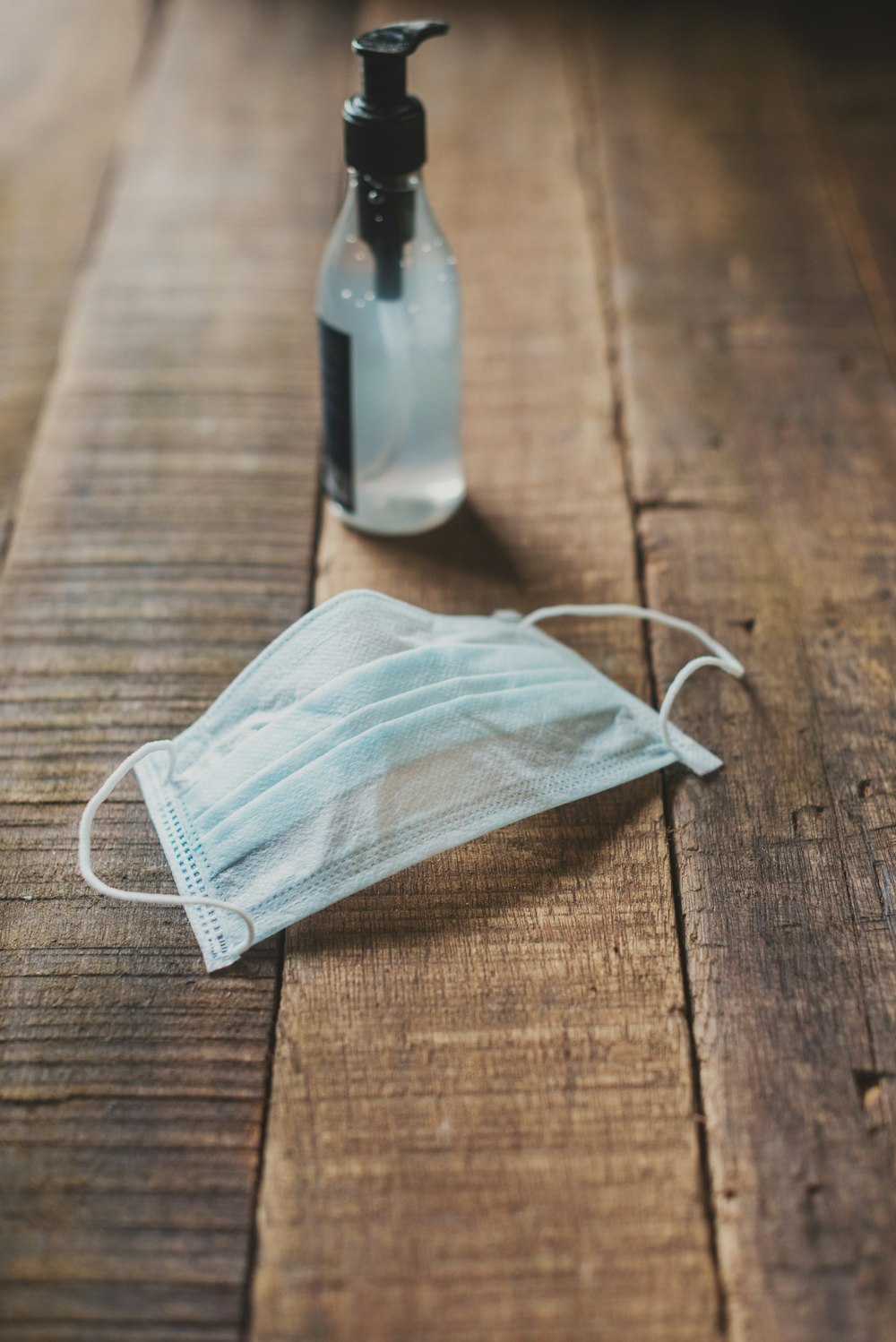
Photo credit: Me, with only partial PPE
If you're anything like me, your head is spinning with all of these mask recommendations. In the past few months everything we do has changed so drastically it's hard to know what's true or correct anymore. In an effort to cut through some of that, I put together quick summary of what masks we use, when, and why. Hopefully this will give you a better understand if why most of us are only visible from the eyes up these days.
The “It’s not me, it's you” Masks
N95
Photo Credit: 3M
This makes us safe by filtering out droplet and aerosolized particles. It’s called an N95 because it halts 95% of the particles that are larger than 0.3 microns (and because the mask is Not to be used in environments that contain oil1). Basically this is the most common “high level” protection mask used in healthcare, and for most healthcare workers in most settings this is sufficient. It’s not 100% effective against all aerosols (which is why intubation teams in the hospital will use PAPRs or CAPRs that have higher levels of air filtration and provide more face protection2), but it does a very good job in most situations.
The facts that an N95 is only a half face covering and is only rated to filter out 95% of particles are why a face shield is recommended to be used at the same time, and why even though most EMS providers have N95 on for most patient encounters, we are still being selective in who we use aerosol generating procedures on (like BiPAP, oxygen above 6L via nasal cannula, or intubation). Hence this look in the hospitals:
Credit: USA Today, Chris Young AP
PAPR (Powered Air Purifying Respirator):
Photo Credit: 3M
CAPR (Controlled Air Purifying Respirator):
Photo Credit: MaxAir
The “It’s not you, it’s me" masks
Surgical masks
Photo Credit: 3M
This keeps others safe from us. It is designed to trap the secretions of a surgeon and prevent her or him from contaminating a sterile field. This is what we are wearing in the hospital all the time.
Cloth masks
Photo Credit: 3M
This mask is used with a similar purpose to the surgical mask, but it is better used in public. This mask will catch some secretions but (probably) less than a surgical mask.
Which is better? Cloth or Surgical:
In general, surgical masks are going to be safer for those around us. There are regulations and standards that dictate what the mask should be made of and how it is constructed, so overall it will be safer2. That said, not all cloth masks are less protective than surgical masks3.
What should we be wearing on a call?
When you're around patients, the best mask to keep you safe is a N95. This is what the CDC recommends when supplies are ample, and is more than what the WHO recommends. Having this mask on during general patient care enables you to feel protected when the patient's condition changes in an emergency and you need to switch to an aerosol generating procedure during care.
The caveat here is that this is what is recommended when supplies are ample. That is not the case right now, so that is why this is not recommended in all places for all patient encounters. Following your local protocols and policies is important here because they will take into account this balance of what protection is needed by who and (hopefully) based upon the best available evidence and expert opinion, along with supply levels, PPE use rate, and reliability of getting replacement supplies (not all agencies can just ask the Pats to go pick up PPE for them…).
What should we be doing in the station?
When you're around patients, the best mask to keep you safe is a N95. This is what the CDC recommends when supplies are ample, and is more than what the WHO recommends. Having this mask on during general patient care enables you to feel protected when the patient's condition changes in an emergency and you need to switch to an aerosol generating procedure during care.
The caveat here is that this is what is recommended when supplies are ample. That is not the case right now, so that is why this is not recommended in all places for all patient encounters. Following your local protocols and policies is important here because they will take into account this balance of what protection is needed by who and (hopefully) based upon the best available evidence and expert opinion, along with supply levels, PPE use rate, and reliability of getting replacement supplies (not all agencies can just ask the Pats to go pick up PPE for them…).
What should we be doing in the station?
A surgical mask or cloth mask is best in these situations. The biggest reason is that we don’t actually know who has COVID and who doesn’t, and we don’t know who can spread it and who can’t. Studies show that between 30 and 60% of people are asymptomatic when the virus is detected in a nasal swab, and a portion of those will never become symptomatic. This not only means you could be spreading it to people before you know you put them at risk, but that you and those around you may never even know they have been exposed. This is another reason why we mask in the hospital even though we are all asymptomatic, and why we are asked to mask in public.
Yes, we could try to increase testing to see who is an asymptomatic carrier and who is not, but everything has limitations. So it is very likely that an unknown percentage of people will test negative, never have symptoms, and still be able to pass the virus around. No, a mask will not protect all people in all circumstances, but it is the cheapest, simplest, and best thing we can do to keep our workforce healthy right now.
Yes, we could try to increase testing to see who is an asymptomatic carrier and who is not, but everything has limitations. So it is very likely that an unknown percentage of people will test negative, never have symptoms, and still be able to pass the virus around. No, a mask will not protect all people in all circumstances, but it is the cheapest, simplest, and best thing we can do to keep our workforce healthy right now.
What about reusing masks?
There is some evolving evidence that reusing masks may be ok. Again, this is not ideal because once you put it on it’s safe to assume it's contaminated. In a situation with ample supplies we should not be reusing any of these masks, but that’s not the world we live in right now, so don’t touch the outside of the mask once you put it on (unless you’re doing a seal check with gloves and then immediately disposing of those gloves) and make sure you clean your hands before and after putting the mask on or adjusting it.
Points to remember (TL;DR):
Wear a surgical mask or cloth mask when outside your house.
Wear a surgical mask or N95 (N95 is better but not always available) when treating patients.
Wear an N95 when doing something that is aerosol generating on someone who does or might have COVID.
Clean your hands often.
Masking is the cheapest, simplest, and best thing we can do to keep our workforce healthy right now. Please do it!
More on this topic:
JAMA: https://jamanetwork.com/journals/jama/fullarticle/2764955
3M Mask Types: https://web.archive.org/web/20200304133722/https://multimedia.3m.com/mws/media/1798135O/possible-alternatives-to-surgical-n95-respirators-in-the-us-healthcare-technical-bulletin.pdf
Comparison of N95 type masks from outside the US: https://multimedia.3m.com/mws/media/1791500O/comparison-ffp2-kn95-n95-filtering-facepiece-respirator-classes-tb.pdf
More on EMS and Social Distancing: https://covid.brownemsdivision.org/2020/04/why-do-we-frontlinehealthcare-providers.html
3M Mask Types: https://web.archive.org/web/20200304133722/https://multimedia.3m.com/mws/media/1798135O/possible-alternatives-to-surgical-n95-respirators-in-the-us-healthcare-technical-bulletin.pdf
Comparison of N95 type masks from outside the US: https://multimedia.3m.com/mws/media/1791500O/comparison-ffp2-kn95-n95-filtering-facepiece-respirator-classes-tb.pdf
More on EMS and Social Distancing: https://covid.brownemsdivision.org/2020/04/why-do-we-frontlinehealthcare-providers.html
References:
5:https://www.usatoday.com/story/news/nation/2014/10/20/cdc-new-protocol/17638161/











